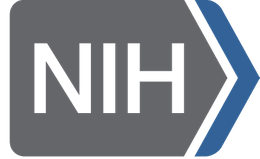Martina Navratilova on Cancer Survival
Tennis great is living healthy and staying active
For Martina Navratilova, the diagnosis of breast cancer came as a total shock—just as the diagnosis does for many women.
But with the same strength and positive attitude that helped her win 59 Grand Slam tennis titles and become one of Sports Illustrated's "Top 40 Athletes of All Time," she met the challenge head on.
In addition to finding out as much as she could about her breast cancer and taking steps to get the best medical advice, she also began speaking out to help all Americans understand the many varieties of the disease.
As Health and Fitness Ambassador for AARP—the nonprofit membership organization for people age 50 and over—Navratilova was already providing advice to Americans on ways to live healthier and more active lives. Now, she is emphasizing the importance for women to get regular, preventive health screenings for breast cancer.
Navratilova recently made time to answer questions for NIH MedlinePlus magazine about her breast cancer.
You discovered you had breast cancer when you were 53 years old. What were your first thoughts upon getting the diagnosis?
Navratilova: It was February 24th, 2010 when I got "the word," and I realized my life would never be the same. This was always going to be hanging over my head. I wanted to know what it meant and how we were going to fix it.
One thing we know about breast cancer is that there are really many different forms of the disease. Can you tell us about the type you were diagnosed with and your course of treatment?
Navratilova: I was diagnosed with DCIS, which is ductal carcinoma in situ, Grade 3, which is the aggressive type. And the treatment is a lumpectomy, which was done in March.
You've said one of the keys to your tremendous success as a tennis player has been a positive attitude. How has that translated to your dealing with cancer?
Navratilova: Well, immediately after I was told what the problem was, I wanted to get into the solution. And I've been in that mode of thinking ever since.
You are keeping up a schedule that is quite amazing even through the course of your treatment. What do you do to keep your energy level up and maintain your health?
Navratilova: I keep eating well, getting enough sleep and resting/napping when I feel like I need it, and more concentrating on breathing and slowing down a bit. Most of all, avoiding stress and accepting offers of help and support from friends.
What is the message you'd most like to send to women recently diagnosed with breast cancer—and to their families?
Navratilova: Don't be afraid to accept help from friends and family. And, of course, be positive. You can't control this, but make sure you don't get in the way of healing.

The National Institutes of Health, a part of the U.S. Department of Health and Human Services, is the nation's medical research agency — making important discoveries that improve health and save lives. NIH is the largest single source of financing for medical research in the world, seeking new ways to cure disease, alleviate suffering and prevent illness. By providing the evidence base for health decisions by individuals and their clinicians, NIH is empowering Americans to embrace healthy living through informed decision-making. NIH is made up of 27 institutes and centers, each with a specific research agenda, focusing on stages of life, like aging or child health, or particular diseases or body systems.

